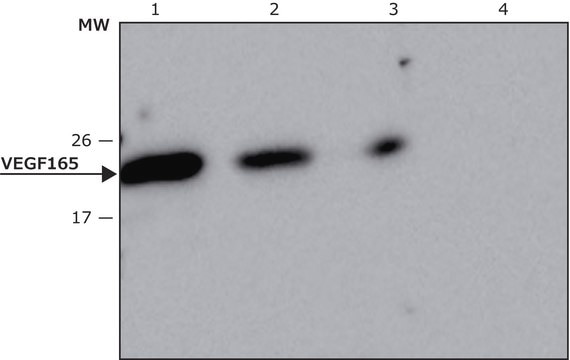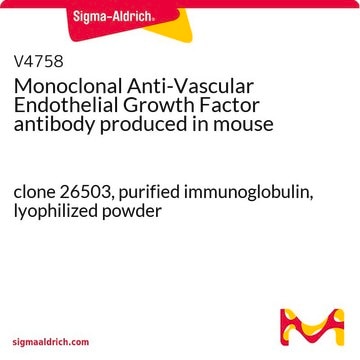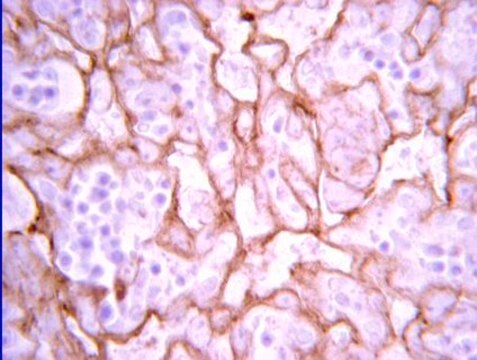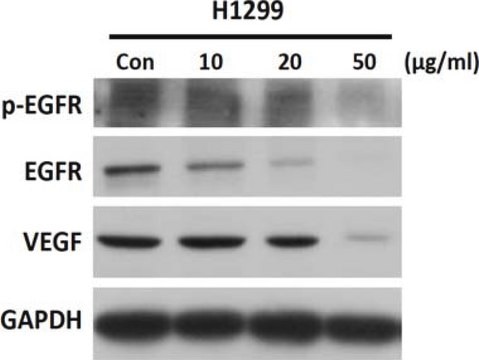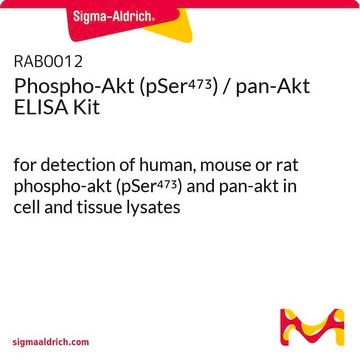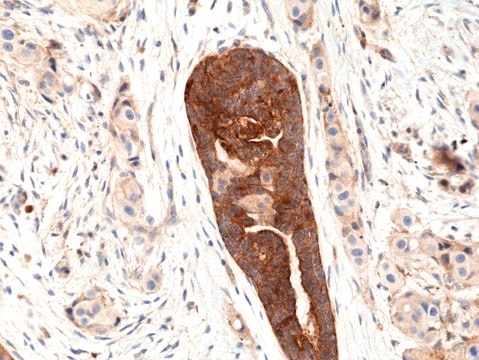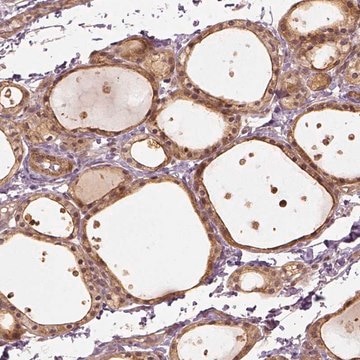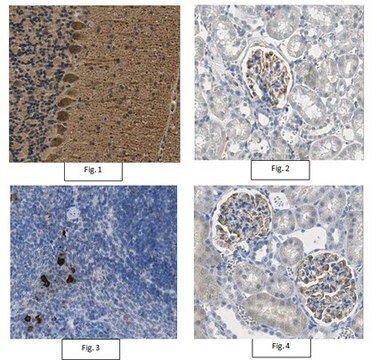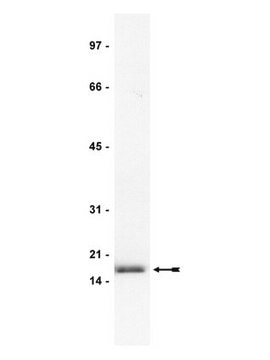MABC595
Anti-VEGF 165b Antibody, clone 56/1
clone 56/1, 1 mg/mL, from mouse
Synonym(s):
Vascular endothelial growth factor 165b, Vascular endothelial growth factor 165, Vascular endothelial growth factor A, Vascular permeability factor
About This Item
Recommended Products
biological source
mouse
Quality Level
antibody form
purified antibody
antibody product type
primary antibodies
clone
56/1, monoclonal
species reactivity
human, mouse, rat
concentration
1 mg/mL
technique(s)
ELISA: suitable
immunohistochemistry: suitable
western blot: suitable
isotype
IgG1κ
NCBI accession no.
UniProt accession no.
shipped in
wet ice
target post-translational modification
unmodified
Gene Information
human ... VEGFA(7422)
Related Categories
General description
Immunogen
Application
Apoptosis & Cancer
Apoptosis - Additional
Immunohistochemistry Analysis: A 1:50 dilution of a representative lot detected detected VEGF 165b in tumor cells of human prostate cancer tissue.
Western Blotting Analysis: A representative lot detected recombinant VEGF 165b protein (Woolard, J., et al. (2004) CANCER RESEARCH 64:7822–7835).
Western Blotting Analysis: A representative lot detected VEGF 165b in human eye tissue lysate (Perrin, R.M., et al. (2005) Diabetologia. 48: 2422–2427).
Immunohistochemistry Analysis: A representative lot detected VEGF 165b in Mouse mesentery tissue (Woolard, J., et al. (2004) CANCER RESEARCH 64:7822–7835).
Immunohistochemistry Analysis: A representative lot detected VEGF 165b in tumor tissue sections (Peiris-Pagès, M., et al. (2010) Pathol. 222(2): 138–147).
ELISA: A representative lot of this antibody detected VEGF 165b by ELISA on tumor tissue samples & tumor cell lines (Peiris-Pagès, M., et al. (2010) Pathol. 222(2): 138–147).
ELISA: A representative lot of this antibody detected VEGF 165b by ELISA on recombinant protein VEGF 165b (Woolard, J., et al. (2004) CANCER RESEARCH 64:7822–7835).
Quality
Western Blotting Analysis: 2 µg/mL of this antibody detected VEGF 165b in 10 µg of NIH/3T3 cell lysate.
Target description
Additional uncharacterized bands may be visible in some lysates.
Physical form
Storage and Stability
Disclaimer
Not finding the right product?
Try our Product Selector Tool.
wgk_germany
WGK 1
flash_point_f
Not applicable
flash_point_c
Not applicable
Certificates of Analysis (COA)
Search for Certificates of Analysis (COA) by entering the products Lot/Batch Number. Lot and Batch Numbers can be found on a product’s label following the words ‘Lot’ or ‘Batch’.
Already Own This Product?
Find documentation for the products that you have recently purchased in the Document Library.
Our team of scientists has experience in all areas of research including Life Science, Material Science, Chemical Synthesis, Chromatography, Analytical and many others.
Contact Technical Service
